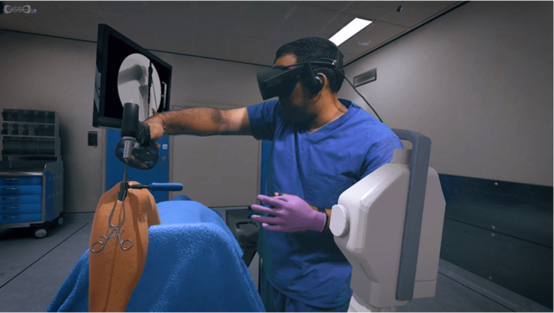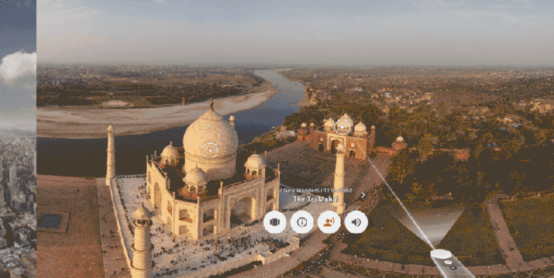How will VR change the way we learn and teach in education - Dr Tenda
2021-08-03
Education is the foundation of a prosperous society, and from the very beginning, the spread of knowledge has been a top priority of civilization. People are always looking for ways to make the transfer of knowledge easier, faster and more efficient. In the age of digital devices, we have the opportunity to use technology to learn better. Virtual reality (VR) seems like a natural next step in the evolution of education. This article will show how virtual reality is changing the way educational content is delivered.
1. Existing learning methods
Before delving into the details of how VR can help improve the learning process in education, it's important to understand why we need to improve the quality of education in the first place. Historically, most technologies designed to aid learning have been designed to enable people to access information -- facts and observations about the world. Before using computers, we had a powerful tool to preserve facts: books.
In the age of digital technology, books are becoming e-books. Modern search engines make fact-finding very easy - answers to many questions can be found with just a few clicks. Even as knowledge becomes more accessible to more people, there are two major problems with the current approach to education:
(1) It is based on the same old format - fact retention. The teaching method focuses on providing facts; But getting and using a lot of information is not learning. Being told is different from being educated.
(2) Many people have difficulty understanding information. Receiving too much information in a short time can easily overwhelm students. As a result, they become bored, isolated, and often unsure why they need to learn a topic in the first place.
2. Change of learning style brought by virtual reality
Virtual reality can be used to enhance student learning and engagement. Virtual reality education can change the way educational content is delivered; It works by creating a virtual world (real or imagined) that users can not only see but interact with. Focusing on what you're learning stimulates enthusiasm and the ability to fully understand, and requires less cognitive load to process the information.
2.1 Better sense of place
When students read something, they often want to experience it. With VR, they are not limited to text descriptions or illustrations. They can explore the topic and learn how to put it all together. With the presence of VR, students can learn about topics through life. It's easy to forget the unreality of the VR world in the immersive experience, and the experience engages the brain in a remarkable way.

Figure 1 virtual reality environment in Rome
2.2 Learning through practice
It is a well-known fact that people can learn best by doing. However, if you look at modern education, you will find that very little learning is actually done. Students focus on reading the instructions rather than using them in practice. Virtual reality in education provides an empirical basis for teaching. Through virtual reality education, learners are inspired to discover themselves. Students have the opportunity to learn by learning rather than passively reading.

FIG. 2 Virtual reality medical laboratory
2.3 Foster creativity
Using VIRTUAL reality in education is useful not only for content consumption, but also for content creation. Increase creativity by providing students with powerful tools such as Tilt Brush.
3. Education revolution brought by virtual reality
The new experiences virtual reality brings to education are also everywhere, and there are several specific types.
3.1 Virtual field trip
By providing an immersive sense of time and place, VR technology can be used to engage students on topics related to geography, history or literature, an experience that is richer than just reading. Google Expeditions is a good example of an application designed to provide this experience. Expedition is a field trip library available to the average smartphone user. Each trip includes A VR panorama, and from the Great Wall of China to Mars, the trip is different. People from all over the world are free to visit these places. Google tested the app in hundreds of schools around the world. The project was so successful that Google attracted one million students from 11 countries to take part in the expedition. Although virtual reality will never replace real travel and travel. But VR can make experiences otherwise impossible.

Figure 3 Google Expeditions
3.2 High-tech training
VR is an ideal solution for high technology training fields such as the military or medical industry. For example, one of the biggest challenges medical students face when studying anatomy is understanding the body in three ways and how different systems work together. Virtual reality education can help overcome this problem. A good example is the VR system used by the Mendel Grammar School in Opava, Czech Republic, to help students in a biology course understand the anatomy of the eye. The team working on the project used a Leap Motion controller and a specially modified Oculus Rift headset to offer an innovative way to learn anatomy.
3.3 Internship Opportunities
Exposure to different careers is an important part of the learning process. From childhood, we have dreams of what we want to be when we grow up, and these dreams are often inspired by the professionals in our lives. Often, we gain this understanding through internships. Another benefit of using VIRTUAL reality in education is that it can help expand students' career fields. Students can explore someone's career for a day, see what someone is studying, and learn what someone likes or doesn't like about their job.
3.4 Distance Education
VR enables us to bridge the gap between educators and learners. With the help of virtual reality, distance learning tools can put educators and students in the same room with their own digital representations -- teachers can be transported into the virtual reality world and guide students "live" via the Web.
4. Design challenges of virtual reality educational experience
Clearly, the future of virtual reality in education is very exciting and full of potential. We are at the dawn of this powerful technology, and designing for VR is full of challenges that we should be prepared to overcome.
Be there. Designers should strive to create a sense of user experience. For example, if you develop a history application, you can bring history to life for students.
Easy to use. Eliminating the need for special skills to interact with VR applications.
Meaningful. Meaning is really important to students. Without a good story, you can't create a good VR learning experience. That's why the art of storytelling is so important. Stories simply provide the best tools for delivering messages that can not only be heard and understood, but can inspire and trigger action.
Adaptable. As Einstein once said, "I never teach my students, I only try to provide conditions in which they can learn." VR experiences should enable students to explore at their own pace. The application should provide full control over the difficulty level. Designers should determine how students learn and then use this knowledge to design VR products that can learn effectively.
Measurable. Every educational tool should provide a measurable impact. Teachers should be able to track indicators of education so that they can measure subject knowledge. When designing a vr educational experience, it is crucial to choose the appropriate metrics and be clear about what criteria to use to measure success and failure.
Create new roles for teachers through VR education
The change from analog teaching practice to digital teaching practice will change the face of teaching. The teacher's role will shift from content delivery to content facilitation. Teachers will focus on creating conditions for exploration rather than providing ready-made knowledge. Obviously, we're in the early stages of VR, and it's going to change. But technology will continue to drive immersive VR. Over the next few years, we'll even see advances in eye tracking and body tracking. In the near future, we think today's immersive experiences will be seen as bets. VR education opens new horizons
Virtual reality in education is on its way, and there's no doubt it will change the world as we know it. The classroom of the 21st century will be a technologically advanced place to learn, with VR technologies that will greatly increase student engagement and learning. VR experiences will inspire a new generation of young people and bright students, ready to innovate and change the world. Meanwhile, the next big thing in education no longer depends on technology, but on the decisions teachers make to promote and adopt those technologies in the classroom. The global goal should be to make knowledge accessible, accessible and affordable to everyone on the planet. Learn more about other emerging technology designs here.
References:
[1] Januszewski, Alan., Molenda, Michael., Educational technology: A definition with commentary. New York: Lawrence Erlbaum Associates. Inc., 2008.
[2] Cheek, D.W., "A Panoramic View of the Future of Learning and the Role of Design(ers) in Such Experiences," in Educational Communications and Technology: Issues and Innovations, Hokanson, Brad., Tracey, M.W., & Clinton, G., Ed. Switzerland: Springer International Publishing Switzerland, 2015, pp. 5 -- 38.
[3] Smith, Keyonda. And S. S. Abrams, "Gamification and Accessibility," Int. J. Inf. Learn. Technol., Vol. 36, No. 2, Pp. 104-123, 2019.
[4] L. C. Miller, L. Wang, D. C. Jeong, and T. K. Gillig, "Bringing the Real World into the Experimental Lab: Transformative Technology-enabling Designs for Social-Behavioral Modeling for Complex Systems, First Edition, First., P. K. Davis, a. O 'mahony, and Pfautz, j., Eds. JohnWiley & Sons, Inc. Published, 2019, Pp. 359-385. https://doi.org/10.1002/9781119485001.ch16
[5] Sutrisno, Pengantar Pembelajaran Inovatif. Jakarta: Gaung Persada Press, 2010.
[6] L. Mehra, "Information and Communications Technology (ICT) in Advanced Education Systems: Challenges in India Information and Communications Technology (ICT) in Advanced Education System: Aspects and Challenges in India Mr. Lekhraj Mehra, Asst. P, "Rev.Bus. Technol. Res., Vol. 12, No. 12, pp. 216-220, 2015.
